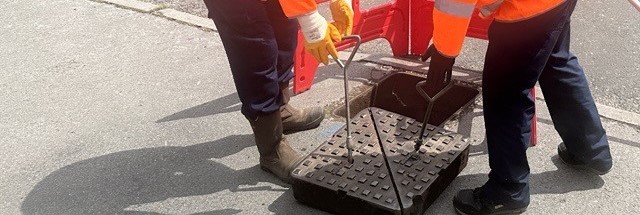
Uncovering the worst illegal connection ever
Bathing Water Lead, Rob Butson, explains how his team found the most significant illegal connection ever on our patch – responsible for pouring millions of litres of wastewater directly into the River Itchen over the past four decades.
Our ‘Sewage Sherlocks’
Our job is to track the sources of contamination into surface water drains from homes and businesses. These problems generally happen when a careless builder or householder accidentally plumbs a new loo or washing machine into surface water drains instead of our sewers.
Usually, these instances are small scale – one or two properties – so it came as a massive shock when our engineers uncovered the worst example of an illegal connection ever found on our patch ever – an entire block of 15 flats releasing wastewater straight into the River Itchen at Portswood - since it was built in 1989.
My colleagues Ben Trinder and Gary Masters made the discovery, and we knew we were on to something big as soon as we started sampling – the contamination was off the charts.

To put the seriousness of this illegal connection in context, a single loo can produce 20,000 litres of sewage a year. So for the building as a whole, that is around 11 million litres of wastewater from toilets alone since the place was built. Not to mention the showers, baths, dishwashers, kitchen sinks, and washing machines.
We are doing a lot of work and investing heavily to help improve water quality in the River Itchen, in protection of local wildlife and in support of a council application for a new bathing water designation.
Detective work to track any causes of contamination in the catchment is what led Ben and Gary to this building, lifting a series of manholes and sampling until they reached Royal Court, in Southampton’s Upper Grosvenor Road.
Our CCTV camera revealed rows of private sewage pipes punched through the side and into the surface water drain. This drainage pipe then runs straight into the Itchen.
Ben and Gary have done the environment an enormous good turn, and highlighted the risks of illegal connections. That’s why we have recently doubled the size of this team to find and fix more problems across the region.
Normally it is the responsibility of householders to put illegal connections right. But such is the scale and importance of this finding, we're moving to put it right as quickly as possible.
The easiest way to avoid these issues happening in the first place is to make sure that when new facilities are installed or constructed that it’s done properly – make sure your builder understands their responsibilities.
